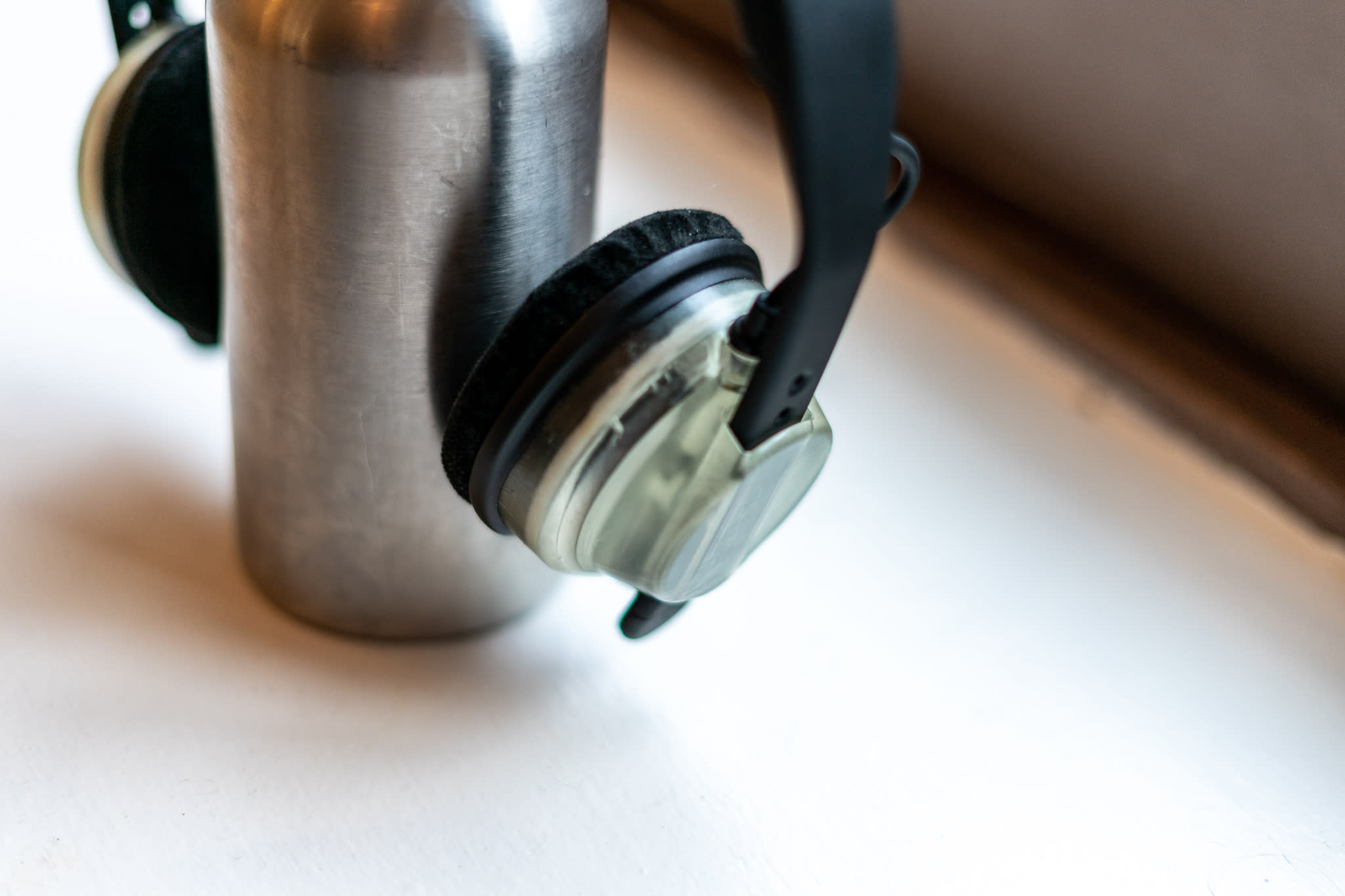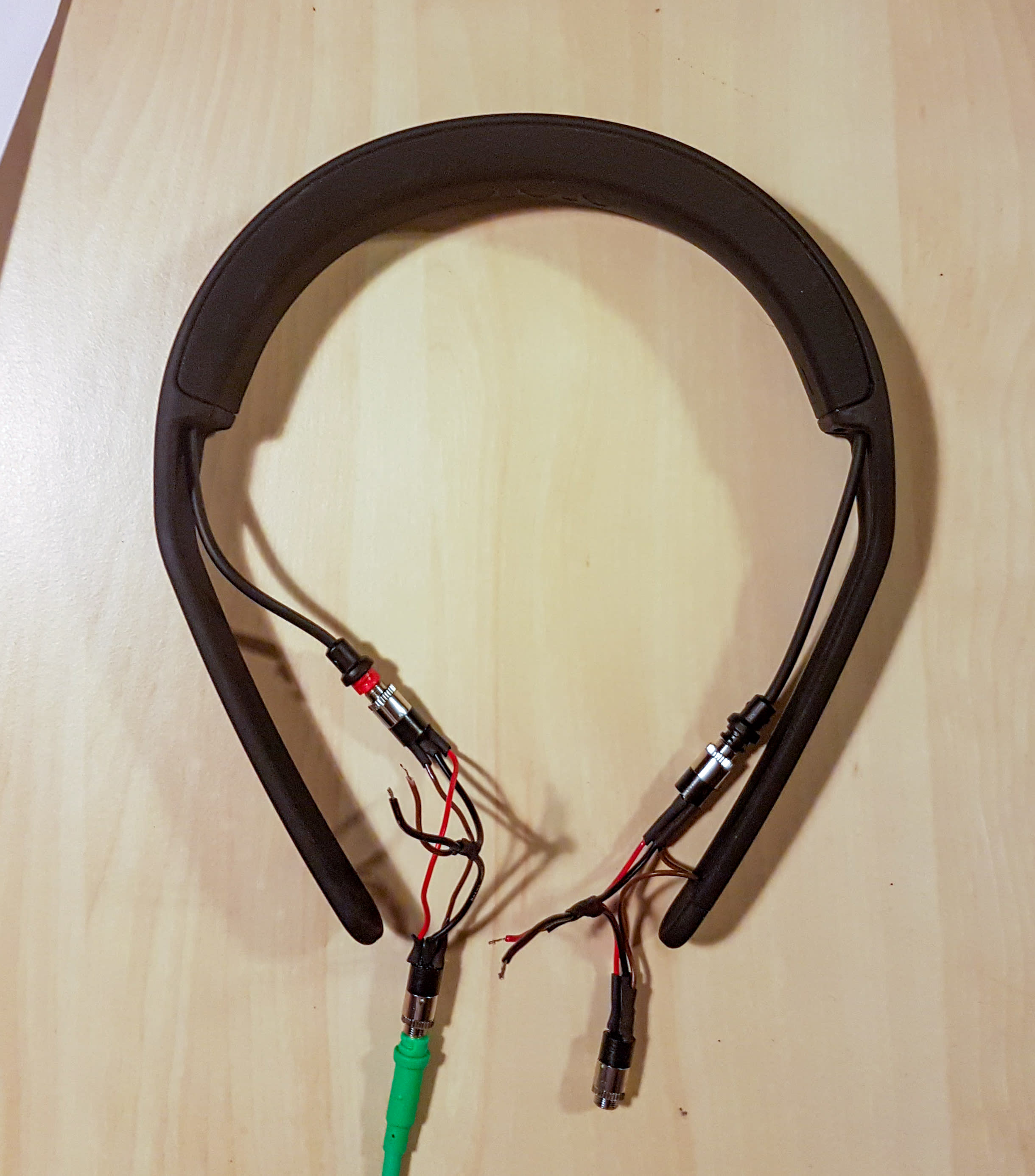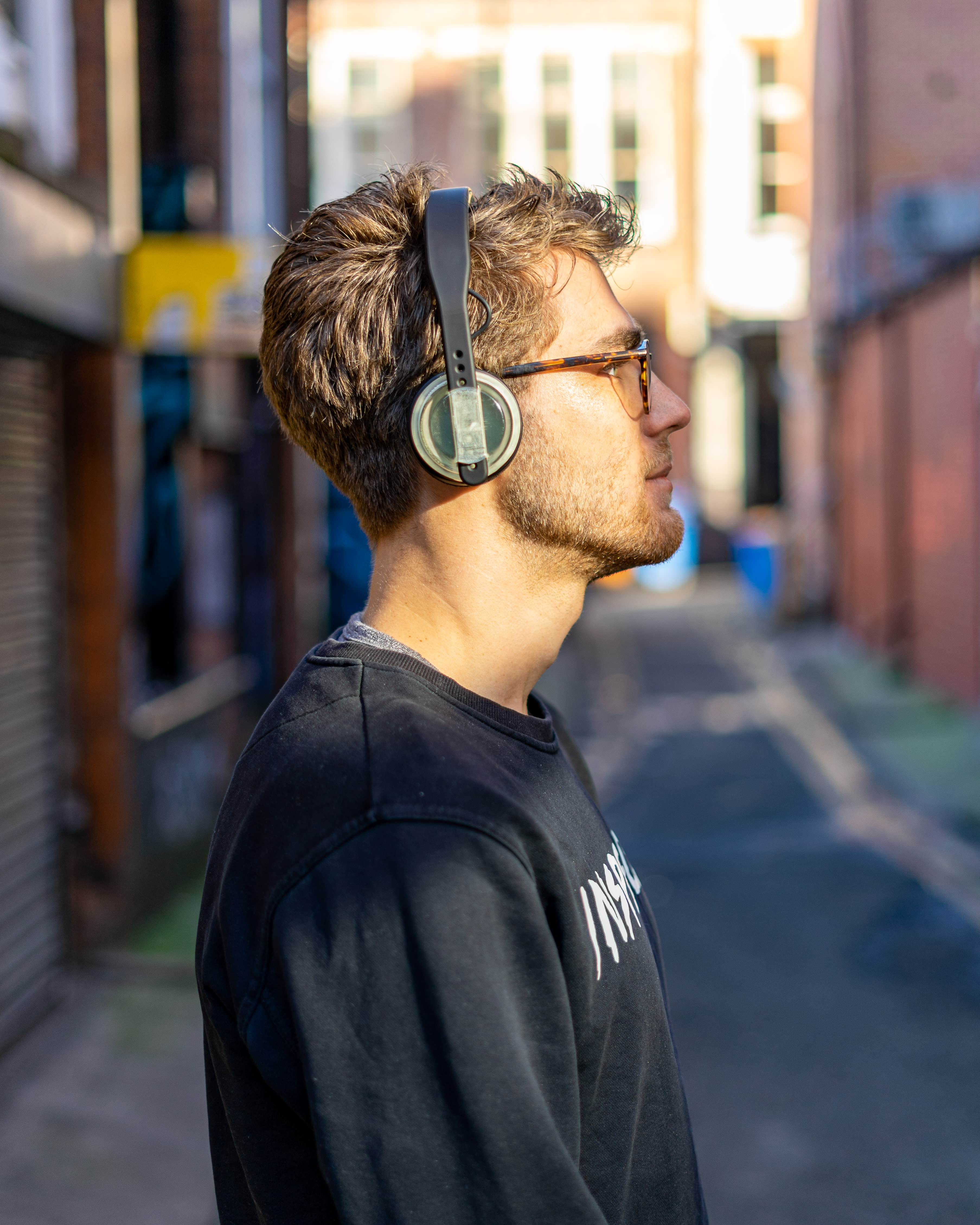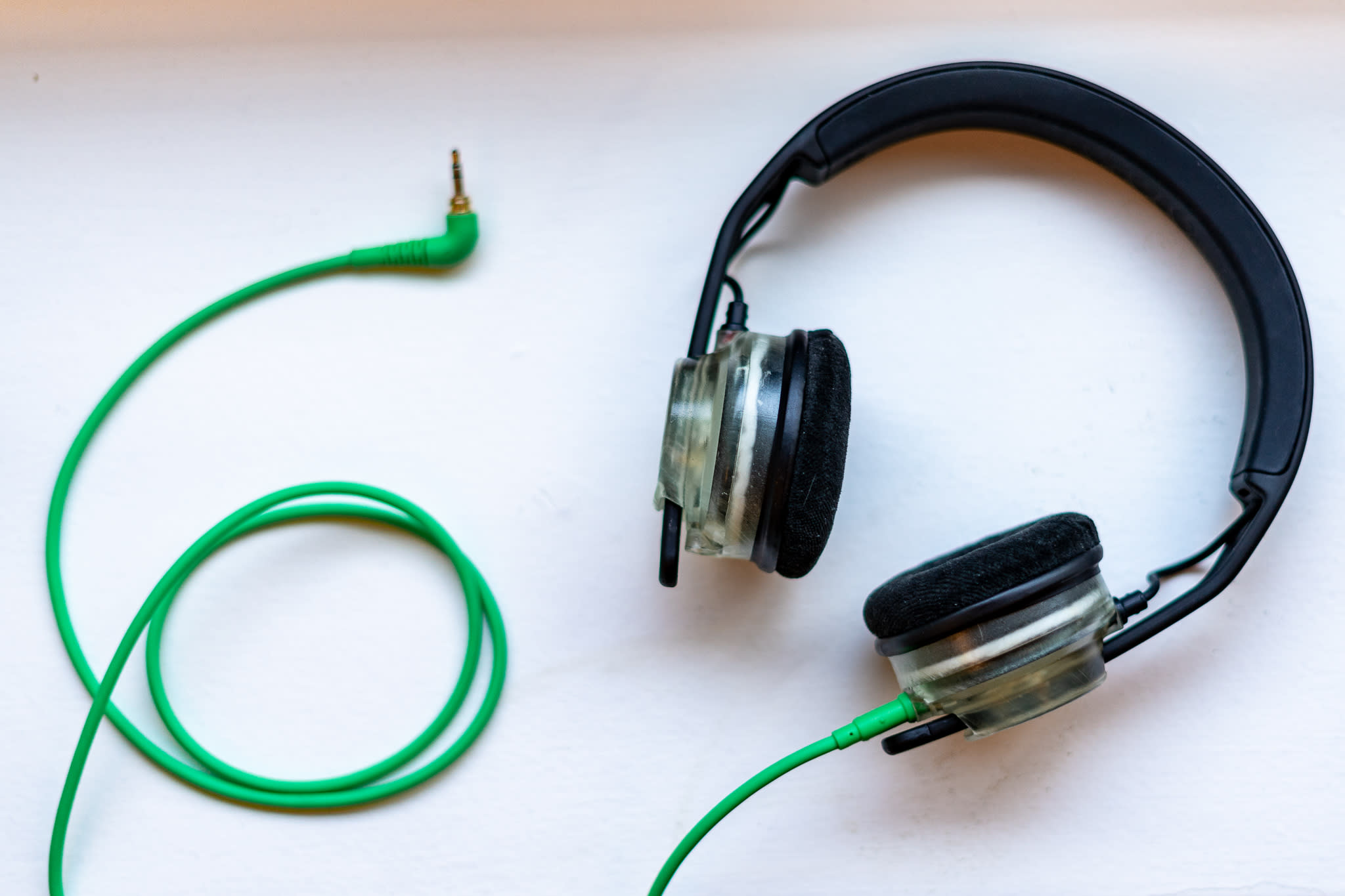I built my own custom Frankenstein headphones from my AIAIAI TMA-2 Wireless and my trusty Sennheiser HD25’s. Here’s why and how.

As a music enthusiast I was unsatisfied with the sound signature of current wireless offerings by Sony, Bose and the likes. And while the preset AIAIAI headphones look great, I had trouble getting used to its sound signature as well. Being a designer, I decided it was time to merge my trusty Sennheiser HD 25’s with the AIAIAI wireless headband. I soldered aux jacks to the drivers –they have neat test probes on the outside that work perfectly – and hooked them up to the headband. A little test showed me that worked, sound!

Designing the cups ✏️
Subsequently, I started with the design of the cups that would enclose the drivers. Sadly, the drivers were rather large in volume as a result of the ratchet system the Sennheiser uses. I decided that I'd prefer a smaller cup over keeping the drivers intact, and made the call to cut the stem off, which (interestingly) exposes the neodymium magnet in the driver.

It took several attempts to get all dimensions right, 3D printing parts that fit snugly on existing parts usually does due to printing tolerances. The first version of my wireless headphones was born. This first version was printed on an FDM printer (Prusa i3+) in black PLA. Both because it is what I had available, and it's quite economical too. This proved to be quite a good overall experience for about a year, but the material started cracking and started showing its wear.
Resin print revision 🔥
The (at that time) newly released Prusa SL1 arrived at our doorstep in late 2019, and that opened up the possibility to print resins. Enabled by this new printer, I printed a revised cup. The current version is see-through and its surface is much smoother than before as well. On top of that, the cracking (due to imperfectly fused layers) behaviour of FDM printing is mitigated as well, a big step up!

After slight modifications to the ratchet system, I was able to print the resin cups. The resin turned out to not be as clear as expected, and needed a little help of a clear coat and some polish (CIF works wonders) to become truly see-through, but the end result is absolutely what I’d hoped for.
Make your own 🔨
If you’d like to replicate this project, you can download the 3D models for free. You'll also need to source:
drivers from a Sennheiser HD25
an AIAIAI TMA-2 H05 Headband
some electrical wiring, heat-shrink tubing and soldering equipment
4x panel mount 3.5mm aux jacks (these look similar, but dimensions might be different)
2x spring as typically found in ballpoint pens for the ratchet system
If you need any assistance, don't hesitate to contact me.
